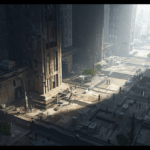Introduction
Urban development isn’t just about bricks and blueprints anymore. The way we design cities is evolving, and with it comes a new language of architecture and engineering—one that includes terms like “parametric design.” But what does this mean? And how does it compare to the more familiar, traditional methods of city planning and design?
1. Traditional Design: Structure Rooted in Experience
Traditional urban design relies on tried-and-true methods: historical context, manual sketches, zoning codes, and fixed layouts. It’s a linear process—architects and planners work through a series of decisions based on aesthetics, regulations, and community needs.
2. Parametric Design: Design Powered by Data and Algorithms
Enter parametric design—a new frontier in urban planning. Rather than drawing static plans, designers input variables (like sunlight, wind, pedestrian movement, or density) into digital software. The design then evolves based on real-time data and mathematical models.
3. Where They Meet: The Hybrid Approach
It’s not a battle of old vs. new—it’s a collaboration. Some of the best urban developments blend tradition with parametric tools. For example, preserving a historic district’s charm while using parametric modeling to improve traffic circulation or green space placement.
Conclusion
Traditional design gives cities a soul. Parametric design gives them intelligence. When used wisely, both approaches have the power to shape urban environments that are not only functional and efficient but also meaningful and inspiring. As cities grow, the challenge isn’t choosing one method over the other, but knowing when—and how—to use each.






